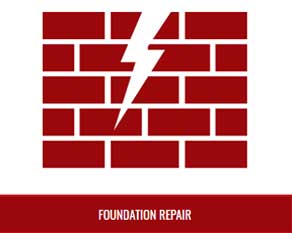The 5 Essentials of House Leveling
To understand house leveling, you don’t necessarily need a Master’s degree. This guide was created to help you. Do not waste your time reading boring, long blogs. This article will give you the basics of house leveling and help you to get the right solutions. Let’s begin with the basics.
What is house leveling?
1. How to Level Your Home
Only professionals should do house leveling. However, this doesn’t mean you should not be familiar with the process. Re-leveling your home with underpinning is a great way to do it. There are two types: steel push-piers and helical piers.
Steel Push Piers – Steel Push Piers are long piles of steel driven down beneath your foundation until they reach stronger soil. Your home is settled because of the soil, and Hydraulic jacks are used to push the home up onto the piers once the soil has been amended.
Helical Piers – Helical, or screw-piles, work similarly to push piers except that they are driven into the soil. The pier is bent into the soil until it reaches stronger soil, much like a corkscrew. Hydraulic jacks then lift the foundation and level your home. Learn more about underpinning.
How to Avoid an Unlevel Home
Differential settlement is the main reason why your home is not level. How can you prevent differential settlement? Too much moisture can cause differential settlement, as we mentioned earlier. Here are some ways to keep water from reaching your foundation.
1) Install an interior drain tile system.
2) Install a drain tile system for exterior use.
3) Install a French drain to your yard.
4) Extensions to gutter and downspout.
5) You can also add a sump pump.
What is House Leveling?
House leveling refers to a foundation repair that raises a settling house back to its maximum level. Unleveled homes are unsafe and can affect your daily life. You might be asking, “Why is my home not level?” *The maximum practical level is the highest amount of foundational lift that can be achieved without causing structural or cosmetic damage.
Rodents
1) Buried material – Any buried construction of organic material can become void over time. Pockets that form under a section of your house will cause it to settle into the gaps or pockets.
2) Backfilled or poorly compacted soil Before building your home, the builder will use a steam roller. This compacts loose soil to create a stronger foundation. Differential settlement can occur if this crucial step is not done correctly or skipped.
3) Unhealthy soil conditions – Differential settlement can be a problem if your foundation was built on topsoil that is too large. Expansive soil is rich in clay and can cause a swelling-shrinking cycle, which strains your foundation. The soil expands when it gets wet and shrinks when it dries.
4) Poor drainage – Water can build up in your soil and cause many problems. Water can wash away soil and leave behind voids depending on its type. The ground can swell and push against your foundation if it is too large.
5) Tree roots – Tree roots can take moisture from the soil and create voids beneath your foundation.
6) Soil creep – Soil movement that causes dirt to slide down a hill can cause lateral movement against your foundation.
7) Natural Disasters – Earthquakes, floods, and droughts can cause differential settlements.
8) Renovations: Adding a story to a section will increase the foundation’s weight and the soil below it. More weight means more settling.
Call 504-858-1974 | Leading house leveling contractor in New Orleans, Louisiana. Ace House Leveling can level and repair slab houses, foundation repairs
These are 11 signs that you need to have your house leveled.
1) Your doors and windows are beginning to stick.
2) Sunken bowed, or uneven flooring is possible.
3) The walls are separated from the floor.
4) Cracks run wall-to-wall across the floor.
5) Cracked, bowing, or leaning walls are signs of weakness.
6) Cracked walls are ripping apart your wallpaper.
7) If the foundation’s exterior is sinking and the interior is rising. This can lead to wall rotation.
8) Large cracks may be found from the corners of the doors or windows up to the ceiling.
9) You can separate the moldings that connect your walls and ceiling.
10) There are stair-step cracks in brick and concrete walls.
11) Your porch or chimney is separating from the rest. This problem could be limited to the foundation beneath your porch or chimney.
The Real Seal
Who do you call if you need house leveling in the Greater New Orleans region? There are many choices, and you need to be able to trust them to deliver quality service. The Real Seal is the only way to get the best service. We can help you get started today with a thorough inspection and free estimate. Concrete leveling, basement waterproofing, crawlspace encapsulation, crawlspace repair, and many other services are available. Learn more about how foundation drainage helps keep your soil and home dry.


